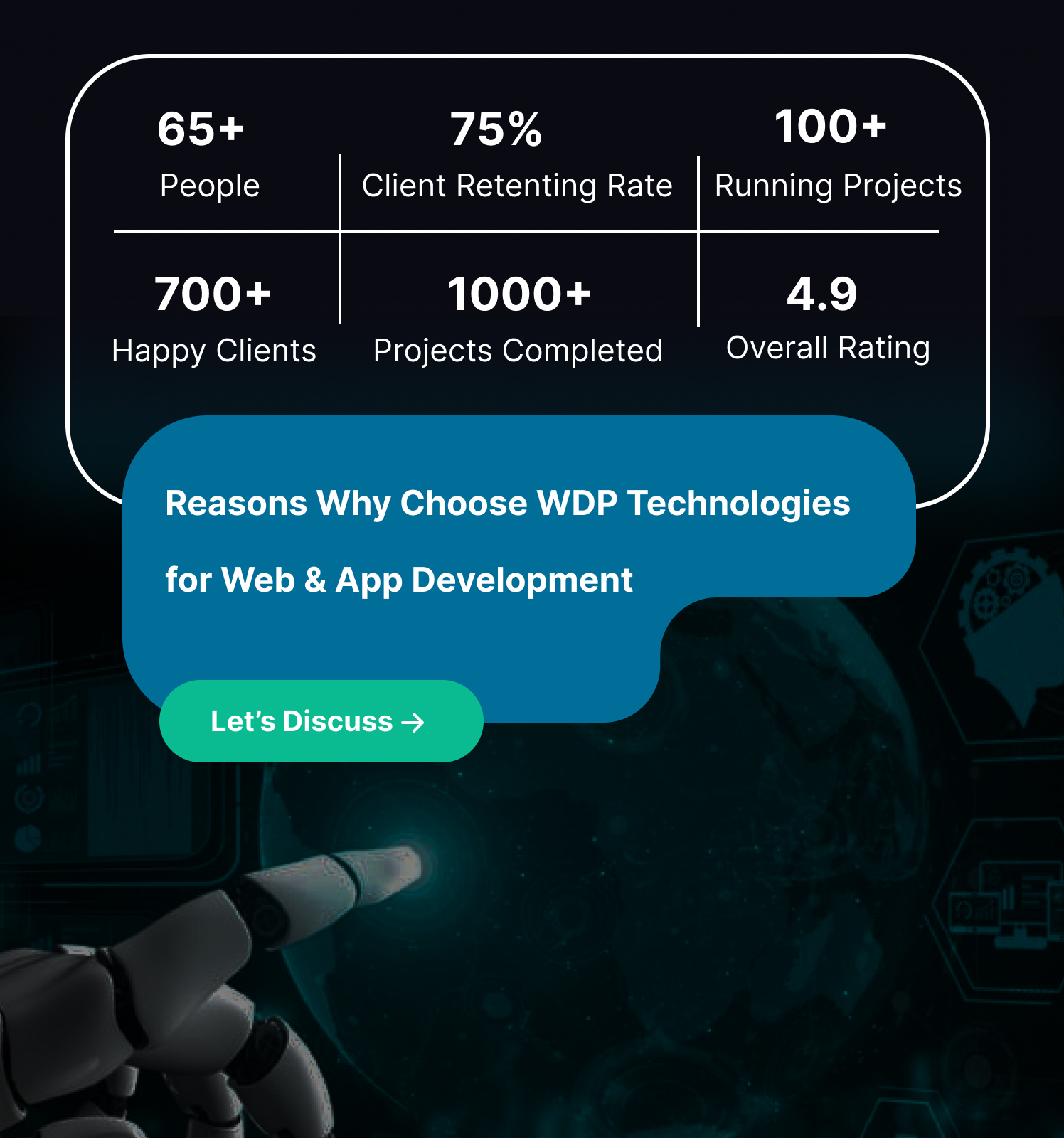In today’s digital age, having a strong online presence is no longer a luxury – it’s a necessity for small businesses. A well-designed website acts as your digital storefront, attracting new customers, informing existing ones, and ultimately driving sales.
But where do you even begin if you’re a small business owner with limited tech knowledge? Don’t worry, this guide will walk you through how to make a website for a small business in depth.
Why Your Small Business Needs a Website
Before knowing how to make a website for a small business, it is necessity to know why small business need website. Think of your website as your 24/7 salesperson, tirelessly working to promote your brand and offerings. Here are just a few reasons why having a website is crucial for your small business:
1. Reach a Broader Audience
A website allows your business to be accessible to a global audience, breaking geographical barriers. Unlike a physical store, which is limited to local foot traffic, a website can attract visitors from anywhere in the world. This increased reach can lead to a larger customer base and higher sales opportunities.
2. Improve Search Engine Rankings
Search engines like Google are often the first place people go when looking for products or services. By having a website that is optimized for search engines (SEO), your business can appear in relevant search results, driving organic traffic to your site. Higher visibility in search results translates to more potential customers discovering your business.
3. Professional Online Presence
A well-designed website conveys professionalism and reliability. In today’s market, consumers expect businesses to have an online presence. A website reassures potential customers that your business is legitimate and trustworthy. It serves as a digital business card, providing essential information and showcasing your brand identity.
4. Customer Testimonials & Reviews
Including customer testimonials and reviews on your website can build trust and credibility. Positive feedback from satisfied customers can influence potential clients and reinforce the quality of your products or services. Testimonials add a personal touch, making your business more relatable and trustworthy.
5. Central Hub for Marketing Efforts
Your website acts as a central hub for all your marketing activities. Whether it’s social media, email marketing, or paid advertising, all your efforts can direct traffic back to your website. This integrated approach ensures consistency in your marketing messages and provides a place for potential customers to learn more about your business.
6. Content Marketing & Blogging
A blog on your website can drive traffic and establish your authority in your industry. By regularly posting valuable content, you can attract and engage your audience, improving your site’s SEO and driving more organic traffic. Content marketing helps build long-term relationships with your customers and keeps them coming back for more information.
7. 24/7 Availability
One of the biggest advantages of having a website is that it makes your business accessible around the clock. Customers can find information, browse products, and even make purchases at any time of the day or night. This 24/7 availability can significantly enhance customer satisfaction and increase sales.
8. Convenient Communication Channels
Your website can offer various communication channels, such as contact forms, live chat, and email, making it easy for customers to get in touch with you. Quick and convenient communication improves customer experience and helps address queries or concerns promptly.
9. Stand Out from Competitors
Having a professional website can set you apart from competitors who may not have an online presence or whose websites are outdated and unprofessional. A well-maintained website showcases your commitment to your business and customers, giving you a competitive edge.
10. Showcase Products and Services
Your website is the perfect platform to showcase your products or services in detail. High-quality images, detailed descriptions, and customer reviews can help potential customers make informed decisions. An attractive and user-friendly website can significantly influence purchasing decisions.
11. Track Customer Behavior
A website allows you to track and analyze customer behavior using tools like Google Analytics. You can gather valuable data on how visitors interact with your site, which pages they visit, and where they drop off. This information helps you understand customer preferences and optimize your website for better performance.
Must Know Key Elements of a Small Business Website
Creating a successful small business website involves more than just a visually appealing design. It must also be functional, user-friendly, and optimized for search engines. Below are the key elements that every small business website should have to ensure it meets these criteria.
1. Home Page
The home page is the first interaction a visitor has with your business, making it crucial for creating a strong first impression. This page should clearly convey your business’s value proposition through concise messaging and high-quality images. Including prominent calls to action (CTAs) like “Contact Us,” “Learn More,” or “Shop Now” can guide visitors towards taking the desired actions, such as making a purchase or contacting you.
2. About Us Page
The About Us page builds trust and credibility by sharing your business’s story, mission, and values. This page should explain why your business exists and what makes it unique. Including photos and brief bios of key team members can humanize your business, helping visitors feel a personal connection. Sharing your journey, along with your mission and values, can resonate with visitors and encourage them to choose your business over competitors.
3. Products/Services Page
This page should provide comprehensive information about the products or services you offer. Detailed descriptions, benefits, and features of each product or service should be included, accompanied by high-quality images or videos. Transparent pricing builds trust and reduces friction in the buying process. Clear information helps visitors understand what you offer and why they should choose your business, leading to higher conversion rates.
4. Contact Information
Making it easy for visitors to get in touch with you is essential. A dedicated contact page should include a contact form, phone number, email address, and physical address if applicable. Additionally, consider including contact information in the footer or header of your site for easy access. Multiple contact methods cater to different visitor preferences, improving overall customer experience and ensuring that potential customers can reach you effortlessly.
5. Blog
A blog is an excellent way to share valuable content, attract visitors, and improve your site’s SEO. Regularly updating your blog with relevant topics that interest your target audience can drive organic traffic and establish your authority in your industry. SEO optimization, including keywords, meta descriptions, and internal links, is crucial for enhancing search engine rankings.
6. Testimonials and Reviews
Customer testimonials and reviews add credibility and social proof to your website. Displaying positive feedback from satisfied customers can significantly influence potential clients’ purchasing decisions. Case studies showcasing detailed examples of how your product or service has helped customers can also be very persuasive. Integrating reviews from platforms like Google or Yelp further enhances credibility, showing that real people trust and recommend your business.
7. Frequently Asked Questions (FAQs)
An FAQ section helps address common questions and concerns, reducing barriers to purchase and improving customer satisfaction. Listing and answering frequently asked questions about your products, services, policies, and other relevant topics can save time for both you and your customers. Including search functionality within the FAQ section can help visitors quickly find the specific answers they need, enhancing their overall experience on your site.
8. Privacy Policy & Terms of Service
These pages are essential for legal compliance and building trust with your visitors. A Privacy Policy should outline how you collect, use, and protect user data, ensuring transparency and fostering trust. The Terms of Service detail the rules and guidelines for using your website and services, protecting both your business and your customers. Having these pages clearly accessible demonstrates your commitment to privacy and fair business practices.
9. Navigation Menu
A well-organized navigation menu ensures visitors can easily find the information they need, improving user experience and keeping visitors on your site longer. The menu should be logically structured with clear labels, making it intuitive for users to navigate. Using dropdown menus for subcategories can keep the navigation clean and straightforward. A sticky navigation menu that remains visible as users scroll down the page can further enhance the user experience by providing constant access to essential links.
10. Search Functionality
A search bar allows visitors to quickly find specific content on your website, improving user experience and engagement. Placing the search bar in a prominent location, usually in the header, ensures it’s easily accessible. Implementing auto-suggestions can help users find what they are looking for more efficiently, enhancing their overall experience and keeping them engaged with your site.
11. Call to Action
Ready to build a powerful website for your small business? Contact us today to get started on creating a professional, user-friendly, and SEO-optimized website that will drive your business growth. Visit our Contact Page to get in touch!
How To Make A Website For A Small Business
Before diving into website creation, some crucial planning steps will ensure a smooth and efficient process. Lets know how to make a website for a small business in steps:
1. Domain Name and Hosting:
Your domain name is your website’s address on the internet (e.g., www.yourbusinessname.com). Choose a name that is memorable, reflects your brand, and is easy to spell and type. Website hosting stores your website’s files and makes it accessible to visitors. Shared hosting is a cost-effective option for beginners, as you share server space with other websites.
2. Website Building Platforms:
If you don’t have coding experience, website building platforms come to the rescue! These user-friendly platforms offer drag-and-drop interfaces and pre-designed templates, allowing you to build a professional website without writing a single line of code. Popular options include Wix, Squarespace, and WordPress.com (a user-friendly version of WordPress). Consider factors like ease of use, design flexibility, and pricing plans when choosing a platform.
3. Choosing a Website Template:
Your website’s visual appeal is crucial for grabbing attention and keeping visitors engaged. Most website building platforms offer a wide variety of templates to choose from. Select a template that aligns with your brand image and industry. Look for templates with a clean layout, easy navigation, and high-quality visuals.
4. Creating Essential Pages:
Every small business website needs a solid foundation of essential pages. These typically include:
- Homepage: This is your website’s welcome mat, providing a clear overview of your business, its offerings, and a call to action.
- About Us: Tell your story! Connect with your audience by sharing your brand’s mission, values, and the team behind the business.
- Services/Products: Clearly showcase what you offer. Use compelling descriptions, high-quality images, and highlight the benefits your products or services provide.
- Contact Us: Make it easy for potential customers to reach you. Include your contact information, a contact form, and a map (if you have a physical location).
5. Adding Functionalities
Certainly! While the core website focuses on content and information, adding functionalities can significantly enhance user experience and engagement on your small business website. Here’s how you can incorporate functionalities to make your website more interactive and beneficial for your visitors:
6. E-commerce Functionality:
If you sell products, consider integrating an e-commerce platform like Shopify or WooCommerce to your website. This allows visitors to browse your product catalog, add items to their cart, and securely checkout online.
7. Appointment Booking:
Do you offer services that require appointments? Platforms like Calendly or Acuity Scheduling can be seamlessly integrated, allowing visitors to schedule appointments directly through your website.
8. Live Chat Support:
Enhance customer service by offering real-time chat support through platforms like Zendesk Chat or Drift. This allows visitors to connect with a customer service representative and get immediate answers to their questions.
9. Interactive Forms:
Go beyond static contact forms. Use tools like Google Forms or Typeform to create engaging quizzes, surveys, or polls to gather valuable customer feedback and insights.
10. User Forums and Communities:
Foster a community around your brand by creating a forum or message board using platforms like phpBB or Vanilla Forums. This allows customers to connect with each other, share experiences, and build brand loyalty.
11. Subscription Forms:
If you offer newsletters, exclusive content, or promotions, integrate a subscription form to capture leads and build your email list for targeted marketing campaigns.
12. Social Media Integration:
Make it easy for visitors to share your content and connect with you on social media. Include social media sharing buttons and consider integrating a live social media feed showcasing your latest posts.
13. Optimizing for Search Engines (SEO):
Search Engine Optimization (SEO) is the magic ingredient that helps your website rank higher in search engine results pages (SERPs). This means when people search for terms related to your business, your website is more likely to appear at the top. Here are some basic SEO tips:
- Keyword Research: Identify relevant keywords that potential customers might use to find your business online. Incorporate these keywords naturally throughout your website content, including page titles, meta descriptions, and headings.
- High-Quality Content: Fresh, informative, and engaging content is essential for both user experience and SEO. Regularly update your website with blog posts, articles, or case studies to keep visitors coming back for more.
- Image Optimization: Use high-quality images that are relevant to your content. Don’t forget to include alt text for each image, which is a brief description that helps search engines understand the image and improves accessibility for visually impaired visitors.
- Google Analytics: Set up Google Analytics to track visitor behavior, such as page views, bounce rates, and conversion rates. This data helps you understand how visitors interact with your site and identify areas for improvement.
- Google Search Console: Use Google Search Console to monitor and maintain your site’s presence in search results. It provides insights into search queries, indexing status, and potential issues that need fixing.
14. Testing and Publishing:
Before you hit publish, thoroughly test your website across different devices (desktop, mobile, tablet) to ensure everything functions properly and displays well. Once you’re confident, launch your website and celebrate your accomplishment!
15. Ongoing Maintenance:
Your website is not a set-it-and-forget-it project. To maintain a strong online presence, regular website maintenance is crucial. This includes:
- Content Updates: Keep your website fresh by regularly adding new content, such as blog posts, product updates, or testimonials.
- Security Updates: Ensure your website platform and plugins are updated with the latest security patches to protect against vulnerabilities.
- Analytics Tracking: Use website analytics tools to track website traffic, user behavior, and identify areas for improvement.
Why Choose WDP Technologies to Make a Website for a Small Business
Choosing WDP Technologies to make a website for a small business ensures a professional, user-friendly, and SEO-optimized site tailored to your specific needs. Our expertise in web design and development, coupled with a focus on enhancing online visibility and customer engagement, guarantees a strong digital presence that drives business growth. Trust WDP Technologies for a seamless, cost-effective, and impactful Web Development solution.
Conclusion
I hope your doubt on how to make a website for a small business get cleared now. A well-designed small business website should incorporate these key elements to ensure it is functional, user-friendly, and optimized for search engines. By including clear messaging, detailed product/service descriptions, easy navigation, and engaging content, your website can effectively attract, inform, and convert visitors into loyal customers. These elements work together to create a seamless and positive user experience, ultimately driving your business growth and success.












